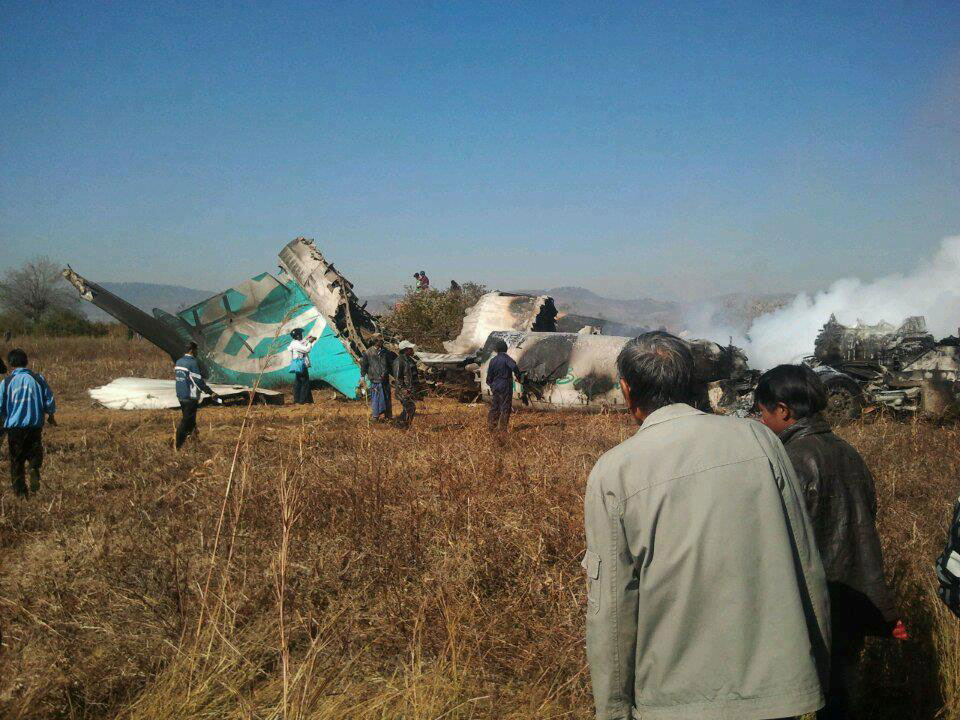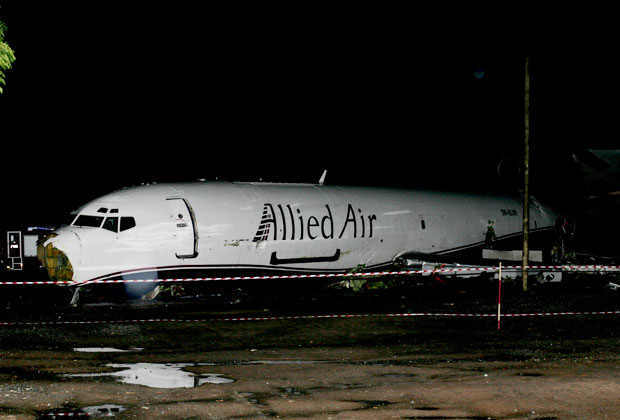This 18th annual review discusses five fatal airline crashes and two other significant events from 2013. The five fatal airline crashes from 2013 represents the fewest fatal passenger events since AirSafe.com was launched in 1996. The two significant events both involved cargo jet crashes that killed all of the crew members. This past year was also unusual in that the majority of these events either occurred in the US or involved a US airline.
Crashes Killing Airline Passengers
- 29 January 2013; SCAT Airlines Canadair CRJ-200ER; UP-CJ006; flight 760; Almaty, Kazakhstan: The aircraft was on a domestic scheduled flight from Kokshetau to Almaty, Kazakhstan, crashed during approach about five kilometers (3.1 mi) from the destination airport, near the village of Kyzyltu.
All five crew members and 16 passengers were killed.
Wikipedia entry for this crash. - 6 July 2013; Asiana Airlines; 777-200ER; HL7742; flight 214; San Francisco, CA:
The aircraft was on a scheduled international flight from Seoul, South Korea to San Francisco, and the rear of the aircraft struck a seawall just short of the runway while landing.
The tail section broke apart, and both horizontal stabilizers and the vertical fin separated from the aircraft. Both engines and the main landing gear also separated from the aircraft.
The aircraft caught fire after it came to rest, but not before all of the crew and most of the passengers were able to escape.
All 16 crew members survived, but thee of the 291 passengers, all teenage girls from China, were killed.
- AirSafeNews.com article from 13 July 2013
- AirSafeNews.com article from 10 July 2013 on the role of the autothrottle
- AirSafeNews.com on early findings of the crash investigation
- Dr. Todd Curtis and former airline pilot Capt. Tom Bunn on the role of the media
- Other 777 plane crashes
- Wikipedia page on this accident
- Other Asiana plane crashes - 7 July 2013; Rediske Air DHC-3 Otter; N93PC; Soldotna, AK: The aircraft was on a nonscheduled domestic flight from Soldotna, Alaska to Bear Mountain Lodge, alsoo in Alaska. The aircraft crashed during takeoff, killing the pilot and all nine passengers.
16 October 2013; Lao Airlines ATR 72-600; RDPL-34233; flight QV301; near Pakxe, Laos: The aircraft was on a scheduled domestic flight from Vientiane, the capitol of Laos, to Pakxe in southern part of the country. It crashed into the Mekong river during its approach and sank. The crash occurred about eight kilometers (five miles) from the airport. All five crew members and 44 passengers were killed.
Fatal ATR 72 crashes17 November 2013; Tartarstan Aircompany 737-500; VQ-BBN; flight 383; Kazan, Russia: The aircraft was on a scheduled domestic flight from Moscow to Kazan, Russia, and crashed during a landing attempt. Early reports indicated that it was at least the second landing attempt. All 44 passengers and six crew members were killed in the crash and subsequent fire.
Fatal events involving airlines of the former Soviet Union
Other Significant Events
29 April 2013; National Airlines 747-400; N949CA; Bagram Air Base, Afghanistan: The aircraft had just departed on a cargo flight to Dubai, UAE when the aircraft entered a stall and crashed near the end of the runway. At one point, the aircraft had rolled to the right in excess of 45 degrees. Although the crew was able to put the wings more or less level, the aircraft impacted the ground at a high vertical speed, causing an explosion and fire. All seven crew members were killed.
Fatal 747 crashes14 August 2013; UPS A300F4-622R; N155UP; flight 1354; Birmingham, AL: The aircraft was on a domestic cargo flight from Louisville, KY (SDF) to Birmingham, AL (BHM), crashed and burned during a landing attempt. The aircraft was destroyed in the crash and subsequent fire, and both pilots were killed. There were no other occupants, and no one was killed or injured on the ground.
Additional details on the crash
Other A300 plane crashes
Fatal and serious events by year
1996, 1997, 1998, 1999, 2000, 2001
2002,2003, 2004, 2005, 2006, 2007
2008, 2009, 2010, 2011, 2012, 2013
AirSafe.com Bonuses
All subscribers to the AirSafe.com mailing list at subscribe.airsafe.com will be able to download free copies of all of the recent AirSafe.com books, including the latest, AirSafe.com Family Air Travel Guide.
Also available is the AirSafe.com Fear of Flying Resource Guide, with an overview of the symptoms of fear of flying, as well as recommended resources for managing or eliminating these fears.













